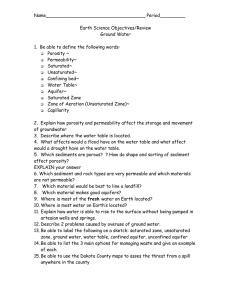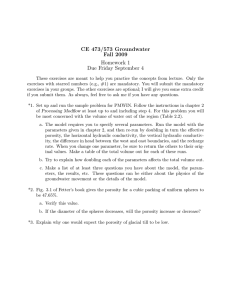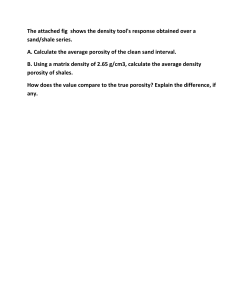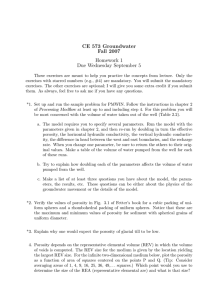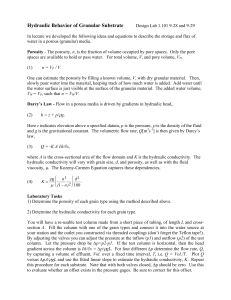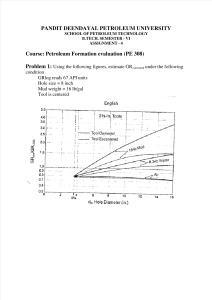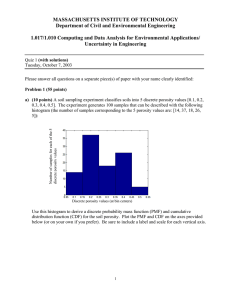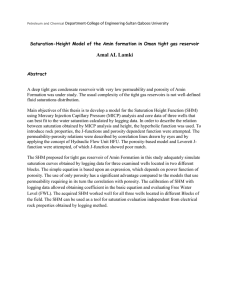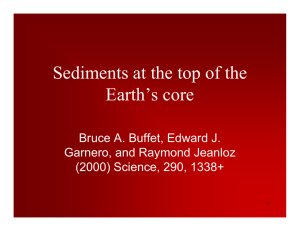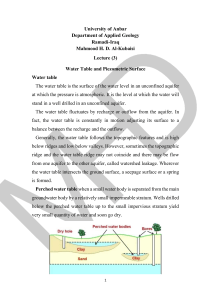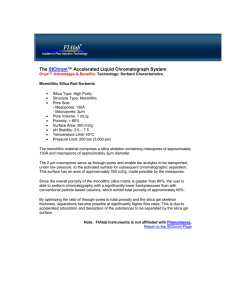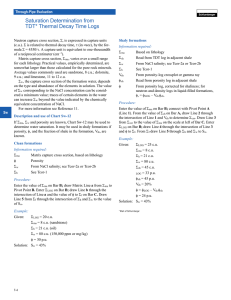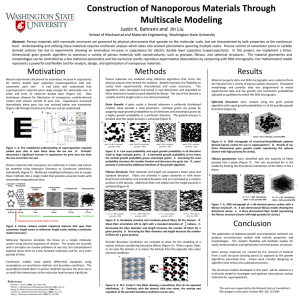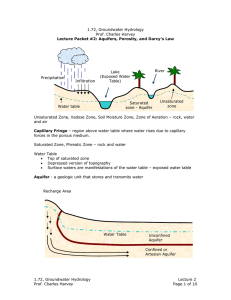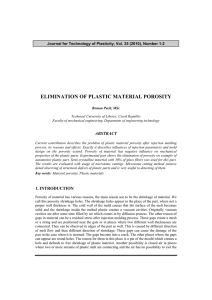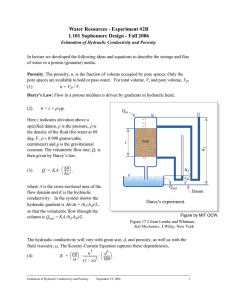CE 473/573 Groundwater Fall 2009 Comments on homework 1
advertisement
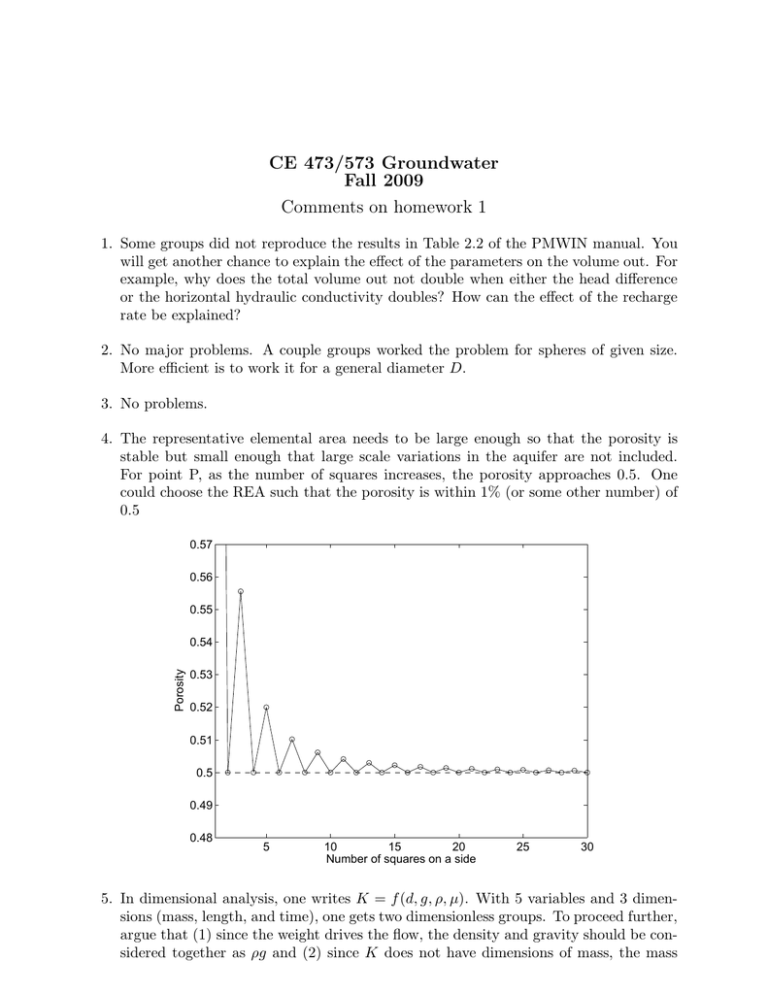
CE 473/573 Groundwater Fall 2009 Comments on homework 1 1. Some groups did not reproduce the results in Table 2.2 of the PMWIN manual. You will get another chance to explain the effect of the parameters on the volume out. For example, why does the total volume out not double when either the head difference or the horizontal hydraulic conductivity doubles? How can the effect of the recharge rate be explained? 2. No major problems. A couple groups worked the problem for spheres of given size. More efficient is to work it for a general diameter D. 3. No problems. 4. The representative elemental area needs to be large enough so that the porosity is stable but small enough that large scale variations in the aquifer are not included. For point P, as the number of squares increases, the porosity approaches 0.5. One could choose the REA such that the porosity is within 1% (or some other number) of 0.5 0.57 0.56 0.55 Porosity 0.54 0.53 0.52 0.51 0.5 0.49 0.48 5 10 15 20 Number of squares on a side 25 30 5. In dimensional analysis, one writes K = f (d, g, ρ, µ). With 5 variables and 3 dimensions (mass, length, and time), one gets two dimensionless groups. To proceed further, argue that (1) since the weight drives the flow, the density and gravity should be considered together as ρg and (2) since K does not have dimensions of mass, the mass units must cancel. Therefore, write K = f (ρg/µ, d) and conclude that there is only one group, which must be constant. Then K ∝ ρgd2 /µ. 6. When the density increases, the weight—a force that drives flow through a porous medium—also increases. Therefore, K should increase.


